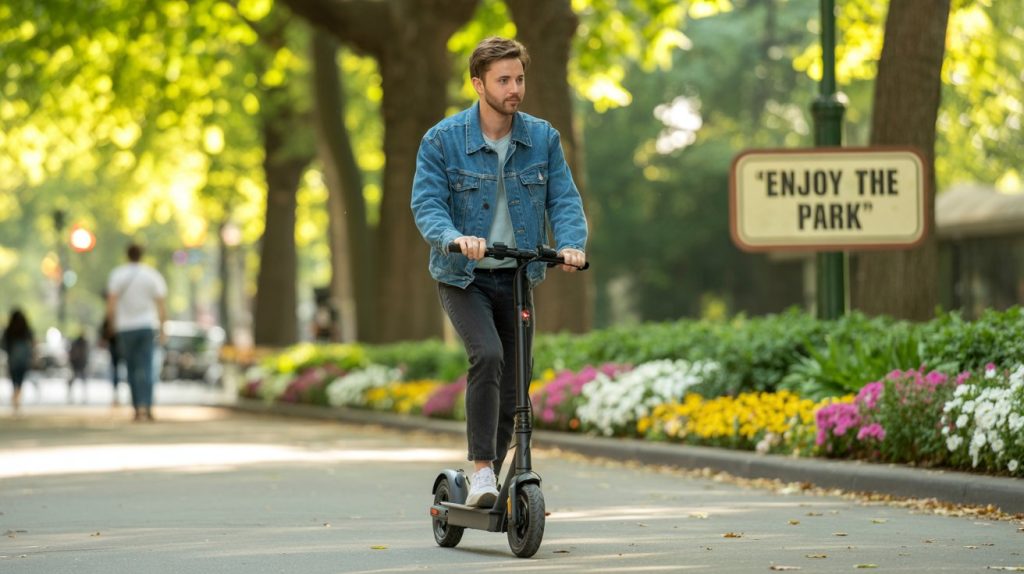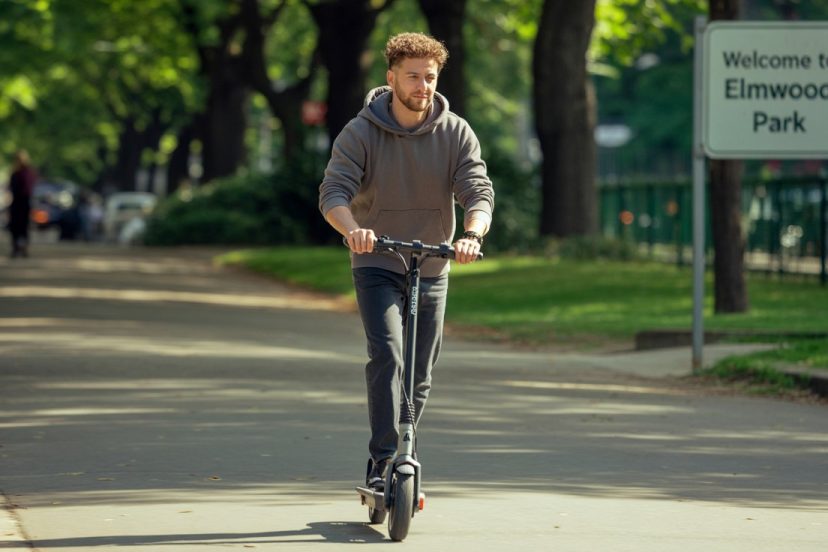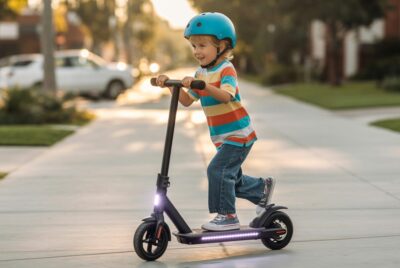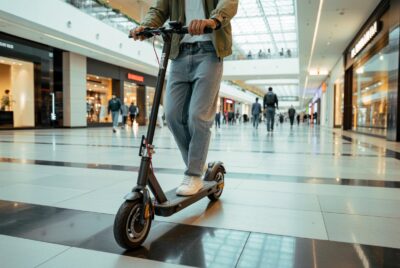Electric Scooter Myths: Separating Fact from Fiction
*We may earn a commission for purchases made using our links. Please see our disclosure to learn more.
The rain had just stopped, and the streets glistened under the morning sun. A commuter stood at the bus stop, watching person after person glide past on electric scooters, their faces relaxed and confident. “Those things must be so dangerous,” they muttered, echoing one of the most persistent myths surrounding electric scooters. This scene plays out daily in cities worldwide, where misconceptions about e-scooters continue to shape public opinion and personal transportation choices.
Electric scooters have revolutionized urban mobility, yet they remain shrouded in myths and misconceptions that prevent many people from experiencing their benefits. These battery-powered vehicles have evolved from simple toys to sophisticated transportation solutions, but outdated beliefs persist. Understanding the truth behind these myths is crucial for anyone considering electric scooters as a viable transportation option.
“The biggest barrier to electric scooter adoption isn’t technology or infrastructure—it’s misinformation. Once people separate fact from fiction, they discover a safe, efficient, and enjoyable way to navigate their world.”
— Urban Mobility Research Institute
Key Takeaways
- Safety Reality: Modern electric scooters are significantly safer than commonly believed, with built-in safety features and improving accident statistics
- Performance Truth: Today’s e-scooters offer impressive range, speed, and reliability that surpass early models
- Legal Clarity: Most jurisdictions have established clear regulations that make electric scooter use legal and straightforward
- Cost Effectiveness: Electric scooters provide excellent value compared to other transportation methods when total costs are considered
- Environmental Impact: E-scooters represent one of the most environmentally friendly personal transportation options available
The Evolution of Electric Scooter Perceptions
Electric scooters entered the mainstream consciousness through shared mobility programs, where early models often lacked the refinement of today’s personal vehicles. These initial experiences, combined with sensationalized media coverage of accidents and regulatory challenges, created a foundation of myths that persist despite significant technological and safety improvements.
The transformation of electric scooter technology mirrors the evolution of many transportation innovations. Early automobiles were once considered dangerous contraptions that frightened horses, while bicycles were deemed inappropriate for certain demographics. Similarly, electric scooters have undergone rapid improvement in design, safety features, and reliability, yet public perception often lags behind these advances.
Myth 1: Electric Scooters Are Extremely Dangerous
The Reality Check
This myth tops the list of electric scooter misconceptions, often fueled by dramatic news stories and viral videos showing accidents. However, comprehensive safety data tells a different story. Recent studies indicate that electric scooter injury rates are comparable to, or in some cases lower than, traditional bicycles when considering miles traveled.
Modern electric scooters incorporate multiple safety features that earlier models lacked. Anti-lock braking systems, improved tire technology, better lighting systems, and stability enhancements have dramatically reduced accident rates. Additionally, the majority of e-scooter accidents involve factors like alcohol consumption, improper helmet use, or rider inexperience rather than inherent vehicle dangers.
Safety Features That Make a Difference
Today’s electric scooters include regenerative braking systems that provide smooth, controlled stops. LED lighting systems ensure visibility in low-light conditions, while improved deck designs offer better grip and stability. Many models feature app integration that provides safety reminders, maintenance alerts, and riding statistics that help users develop safer habits.
The key to safe electric scooter operation lies in proper education and responsible use. Riders who wear appropriate safety gear, follow traffic rules, and maintain their scooters properly experience remarkably few safety issues. This pattern mirrors other forms of personal transportation, where user behavior significantly impacts safety outcomes.
Myth 2: Electric Scooters Have Poor Range and Performance
Performance Revolution
Early electric scooters suffered from limited battery technology and basic motor systems, leading to the persistent belief that e-scooters can’t handle real-world transportation needs. Contemporary models shatter these performance limitations with ranges exceeding 25 miles, speeds up to 25 mph, and hill-climbing capabilities that handle most urban terrain.
Battery technology improvements have been particularly dramatic. Lithium-ion batteries now provide consistent power delivery throughout their charge cycle, eliminating the power fade that plagued earlier models. Fast-charging capabilities mean most scooters can be fully charged in 3-4 hours, making them practical for daily commuting.
Real-World Performance Metrics
Modern electric scooters excel in urban environments where their performance characteristics align perfectly with typical transportation needs. The average urban commute covers less than 10 miles, well within the range of most quality e-scooters. Their acceleration capabilities often surpass cars in city traffic, while their compact size enables route options unavailable to larger vehicles.
Weather resistance has also improved significantly. Many current models feature IPX4 or higher water resistance ratings, allowing operation in light rain and humid conditions. Pneumatic tires provide better traction and comfort compared to solid wheels, while suspension systems smooth out road imperfections.
Myth 3: Electric Scooters Are Illegal Everywhere
Legal Landscape Clarification
Regulatory confusion contributes significantly to this myth, as electric scooter laws vary by jurisdiction and have evolved rapidly. However, the trend clearly favors legalization and integration into existing transportation frameworks. Most major cities and states now have specific regulations that permit electric scooter use with appropriate safety requirements.
The legal framework typically treats electric scooters similarly to bicycles, requiring helmet use in certain age groups and prohibiting use on sidewalks in business districts. Speed limits, licensing requirements, and insurance obligations vary, but outright bans have become increasingly rare as authorities recognize the transportation benefits of e-scooters.
Understanding local regulations remains important, but the complexity often gets exaggerated. Most jurisdictions provide clear guidelines through their transportation departments, and many electric scooter manufacturers include legal guidance with their products. The key lies in staying informed about local requirements rather than assuming blanket prohibitions exist.
Registration requirements, when they exist, are typically straightforward and inexpensive. Some areas require basic safety equipment like reflectors or bells, while others mandate specific insurance coverage. These requirements generally aim to enhance safety rather than restrict access, reflecting a maturing regulatory approach to electric mobility.

Myth 4: Electric Scooters Are Too Expensive
Cost Analysis Reality
This myth often stems from comparing electric scooter purchase prices to individual transit fares without considering total transportation costs. When evaluated against car ownership, taxi services, or even public transit annual passes, electric scooters frequently provide superior value propositions.
A quality electric scooter represents a one-time investment that can replace hundreds of shorter trips annually. Maintenance costs remain minimal, typically involving tire replacement, brake adjustments, and occasional battery service. Energy costs for charging are negligible, often less than a dollar per week for regular commuters.
Financial Benefits Beyond Purchase Price
Electric scooters eliminate parking fees, reduce fuel costs, and can decrease wear on personal vehicles when used for errands and short trips. Many users report savings of hundreds of dollars annually in transportation costs, with the scooter paying for itself within months through reduced reliance on other transportation modes.
The health benefits also provide economic value through reduced healthcare costs and improved productivity. Regular scooter use promotes physical activity and outdoor exposure while reducing stress associated with traffic congestion and parking challenges.
Myth 5: Electric Scooters Harm the Environment
Environmental Impact Assessment
This myth typically conflates shared e-scooter programs with personal ownership, or focuses on battery production without considering the complete lifecycle analysis. Personal electric scooters have minimal environmental impact compared to cars, motorcycles, or even public transit when individual usage is considered.
The manufacturing footprint of an electric scooter represents a fraction of automobile production, while operational emissions are virtually zero when charged from the grid. Even considering battery replacement cycles, the environmental impact remains significantly lower than fossil fuel alternatives.
Sustainability Advantages
Electric scooters promote sustainable urban development by reducing pressure on parking infrastructure and road capacity. They complement public transit systems by solving the “last mile” problem, potentially increasing overall public transportation usage. Their compact size means efficient use of urban space and resources.
Battery recycling programs continue expanding, addressing end-of-life environmental concerns. Many manufacturers now offer battery recycling services, while third-party programs ensure responsible disposal of worn components. The environmental equation becomes even more favorable as renewable energy adoption increases and battery technology improves.
The Truth About Electric Scooter Maintenance
Maintenance requirements represent another area where myths persist. Electric scooters require minimal routine maintenance compared to cars or motorcycles, with most tasks being simple enough for users to handle independently. Regular maintenance involves checking tire pressure, cleaning the scooter, and ensuring moving parts remain properly lubricated.
Battery care follows straightforward guidelines: avoid complete discharge cycles, store in moderate temperatures, and use manufacturer-approved chargers. These simple practices can extend battery life significantly, often providing years of reliable service. Professional maintenance, when needed, typically costs far less than automobile service.
Cultural Shifts and Acceptance
Electric scooter adoption reflects broader changes in transportation preferences, particularly among younger demographics who prioritize convenience, environmental responsibility, and cost-effectiveness over traditional status symbols. This cultural shift challenges myths rooted in older transportation paradigms.
Professional environments increasingly accept alternative transportation methods, with many workplaces adding electric scooter parking and charging facilities. The “professional image” concerns that once limited adoption continue diminishing as e-scooters become mainstream transportation tools rather than recreational devices.
Future Developments and Myth Prevention
Technological advances continue addressing the root causes of many electric scooter myths. Improved battery technology, enhanced safety features, and better integration with urban infrastructure will likely eliminate remaining performance and safety concerns. However, myth prevention requires proactive education and transparent communication about both capabilities and limitations.
Manufacturers, regulatory bodies, and user communities share responsibility for accurate information dissemination. As electric scooter technology matures, evidence-based discussions will likely replace speculation and misinformation, leading to more informed transportation choices.
The electric scooter industry’s commitment to continuous improvement suggests that today’s performance and safety standards represent minimum baselines rather than peak capabilities. Future developments will likely make current myths seem even more outdated while potentially creating new misconceptions that require addressing.
Conclusion
Electric scooter myths persist despite mounting evidence of their safety, practicality, and environmental benefits. These misconceptions often stem from outdated information, isolated incidents, or fundamental misunderstandings about modern e-scooter technology. Separating fact from fiction reveals electric scooters as viable, safe, and environmentally responsible transportation options suitable for many urban mobility needs.
The evolution from early, basic models to today’s sophisticated electric scooters mirrors the development path of many successful technologies. As public understanding catches up with technological reality, electric scooters will likely become as accepted and integrated into transportation systems as bicycles or public transit.
Making informed decisions about personal transportation requires looking beyond myths to examine actual performance data, safety statistics, and real-world user experiences. Electric scooters have earned their place in the modern transportation ecosystem through continuous improvement and proven effectiveness rather than marketing hype or wishful thinking.
Frequently Asked Questions
Q: Are electric scooters safe to ride in traffic?
A: Modern electric scooters can be safely operated in traffic when proper safety precautions are followed, including wearing helmets, following traffic laws, using designated bike lanes when available, and maintaining awareness of surrounding vehicles. Many models include safety features like lights and reflectors specifically designed for road use.
Q: How long do electric scooter batteries typically last?
A: Quality electric scooter batteries generally provide 2-4 years of regular use, depending on charging habits, storage conditions, and usage patterns. Proper battery care, including avoiding complete discharge cycles and storing at moderate temperatures, can significantly extend battery life.
Q: Do I need a license to operate an electric scooter?
A: Most jurisdictions do not require licenses for electric scooters under certain speed and power limits, typically treating them similarly to bicycles. However, requirements vary by location, so checking local regulations is important before operation.
Q: Can electric scooters handle hills and rough terrain?
A: Many modern electric scooters can handle moderate hills and varied terrain, with some models specifically designed for off-road use. Motor power, tire type, and rider weight affect climbing ability, but most quality scooters manage typical urban terrain effectively.
Q: What’s the real cost of owning an electric scooter?
A: Beyond the initial purchase price, electric scooter ownership costs include periodic tire replacement, brake maintenance, and eventual battery replacement. Total annual costs typically range from $50-200 for regular users, making them highly cost-effective compared to other transportation options.




